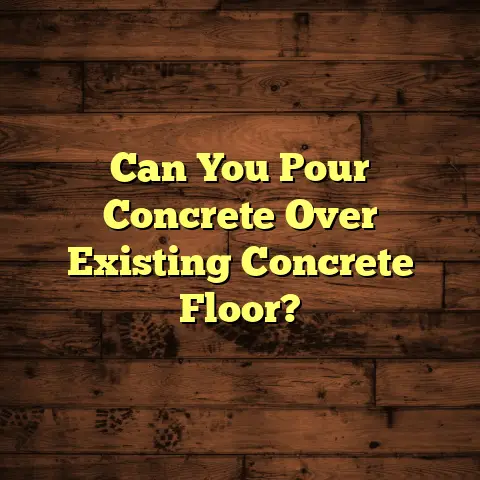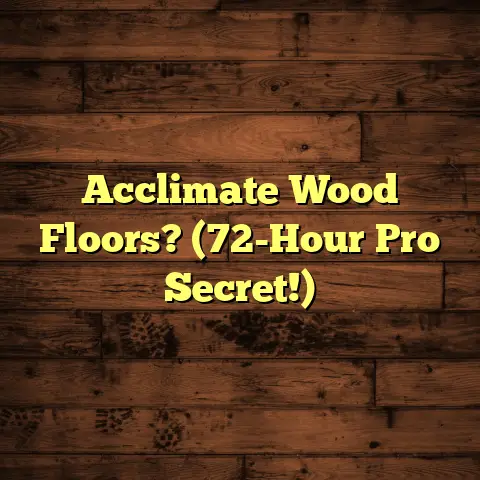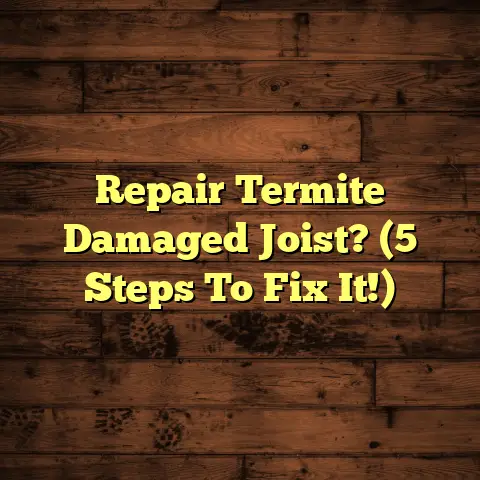Stop Vinyl Plank Moisture Buildup Now! (3 Fixes Needed!)
And let me tell you, vinyl plank flooring (VPF) is fantastic, but moisture can be its kryptonite.
VPF has taken the flooring world by storm, and for good reason. It’s stylish, budget-friendly, and can handle splashes like a champ.
Think about it: you get the look of hardwood or tile without the hefty price tag or the fear of water damage. Perfect for busy families, right?
But here’s the thing: while VPF is water-resistant, it’s not waterproof. And that’s where the trouble starts. Moisture can sneak in underneath, leading to a whole host of problems that nobody wants.
Imagine your beautiful new floor warping, bubbling, or even worse, becoming a breeding ground for mold. Yikes! That’s why I’m here to share my insider knowledge and help you avoid this nightmare.
In this article, I’m going to walk you through three crucial fixes to prevent and tackle moisture buildup under your vinyl plank flooring.
We’ll cover everything from prepping your subfloor like a pro to mastering ventilation and humidity control. Plus, I’ll share my secrets for regular maintenance to keep your floors looking their best.
So, grab a cup of coffee, settle in, and let’s get started! By the end of this read, you’ll be equipped to protect your investment and enjoy your VPF for years to come. Ready? Let’s dive in!
1. Understanding Vinyl Plank Flooring and Moisture Issues
Okay, let’s start with the basics. What exactly is vinyl plank flooring, and why is moisture such a big deal?
VPF is a multi-layered synthetic flooring option designed to mimic the look of natural materials like wood or stone. It’s typically made up of:
-
A wear layer: This is the top layer that protects the floor from scratches, stains, and everyday wear and tear.
-
A decorative layer: This is where the magic happens! It’s a printed image that gives the VPF its realistic appearance.
-
A core layer: This provides the floor with stability and water resistance. This can be either rigid or flexible.
-
An underlayment (optional): Some VPF comes with a pre-attached underlayment for added comfort and sound insulation.
Now, there are two main types of VPF you’ll encounter:
-
Rigid Core: This type is known for its durability and stability. It’s less likely to telegraph imperfections in the subfloor.
-
Flexible Core: This type is more pliable and often more affordable. However, it can be more susceptible to indentations and may require a smoother subfloor.
Installation methods also vary. Some VPF is installed using a click-lock system, while others require adhesive. The click-lock system is popular for DIYers because it’s relatively easy to install.
So, where does moisture come into play? Well, certain areas are more prone to moisture buildup than others. Think about:
-
Basements: These are notorious for being damp and humid.
-
Kitchens: Spills and leaks are common in kitchens, making them susceptible to moisture.
-
Bathrooms: Showers and baths create a lot of humidity.
-
Laundry Rooms: Washing machines can leak, and dryers can vent moisture into the room.
But it’s not just about spills. Moisture can also infiltrate from:
-
Humidity: High humidity levels can cause moisture to condense on cooler surfaces, like your subfloor.
-
Temperature Changes: Fluctuations in temperature can create condensation.
-
Improper Installation: Gaps or cracks in the flooring can allow moisture to seep in.
-
Subfloor Issues: Concrete subfloors can wick moisture from the ground, while wood subfloors can absorb moisture from the air.
Ignoring moisture problems can have serious consequences. I’ve seen it firsthand:
-
Damaged Subfloor: Moisture can rot wood subfloors or cause mold growth on concrete subfloors.
-
Reduced Flooring Lifespan: Moisture can weaken the adhesive or cause the planks to delaminate.
-
Health Hazards: Mold and mildew can trigger allergies and respiratory problems.
-
Unpleasant Odors: Musty smells are a telltale sign of moisture buildup.
According to the EPA, maintaining indoor humidity between 30-50% can help prevent mold growth. (Source: EPA Mold Website)
Trust me, addressing moisture issues early on is crucial. It’s much easier (and cheaper) to prevent problems than to fix them later. So, let’s move on to the first fix: prepping your subfloor like a pro.
2. The First Fix – Improving Subfloor Preparation
Alright, let’s talk subfloors. This is where the magic really happens. Proper subfloor preparation is the foundation for a successful VPF installation. Think of it as building a house; you wouldn’t skip the foundation, would you?
The subfloor is the layer directly beneath your flooring. It provides a stable, level surface for your VPF. The most common types of subfloors are:
-
Concrete: Common in basements and ground-level floors. Concrete can be prone to moisture wicking from the ground.
-
Plywood: Typically used on upper floors. Plywood can absorb moisture from the air and is susceptible to rot.
-
OSB (Oriented Strand Board): Similar to plywood but often less expensive. OSB is also susceptible to moisture damage.
Each type of subfloor has its own set of challenges when it comes to moisture. Concrete can wick moisture from the ground, while wood-based subfloors can absorb moisture from the air.
So, how do you prepare your subfloor for VPF? Here’s a step-by-step guide:
Step 1: Assess Moisture Levels
Before you do anything else, you need to check the moisture levels in your subfloor. I always use a moisture meter for this. It’s a simple tool that gives you a reading of the moisture content in the material.
For concrete, aim for a moisture content below 4%. For wood, aim for a moisture content between 6-8%.
If the moisture levels are too high, you’ll need to address the source of the moisture before proceeding. This might involve repairing leaks, improving drainage, or using a dehumidifier.
Step 2: Clean and Level the Subfloor
Once you’ve addressed any moisture issues, it’s time to clean and level the subfloor. Remove any debris, dirt, or old adhesive. You can use a scraper, vacuum, or broom for this.
Next, check for any unevenness in the subfloor. You can use a level or a straightedge to identify high and low spots. If the subfloor is uneven, you’ll need to level it out.
For concrete, you can use a self-leveling compound to fill in low spots. For wood, you can use plywood shims to raise low spots or sand down high spots.
Step 3: Apply a Moisture Barrier
This is where the real magic happens! A moisture barrier is a layer of material that prevents moisture from seeping up from the ground or underlying layers.
There are several types of moisture barriers you can use:
-
Polyethylene Sheeting: This is a thin plastic sheet that’s placed over the subfloor. It’s a cost-effective option, but it can be difficult to seal properly.
-
Specialized Underlayment: Some underlayments come with a built-in moisture barrier. These are often easier to install and provide better protection.
-
Liquid-Applied Membrane: These are painted onto the subfloor and create a waterproof barrier. They’re a good option for concrete subfloors.
When installing a moisture barrier, make sure to overlap the seams by at least 6 inches. Use seam tape to seal the seams and prevent moisture from seeping through.
Don’t forget the edges! Seal the edges of the moisture barrier to the walls using caulk or sealant. This will prevent moisture from wicking up from the perimeter of the room.
Here are a few extra tips for ensuring a proper seal:
-
Use the Right Tape: Use a high-quality seam tape that’s designed for use with moisture barriers.
-
Overlap Generously: Don’t skimp on the overlap. The more overlap, the better the seal.
-
Seal Around Pipes and Obstructions: Use caulk or sealant to seal around pipes, toilet flanges, and other obstructions.
Remember, proper subfloor preparation is an investment in the long-term health of your VPF. Don’t cut corners here! Take the time to do it right, and you’ll be rewarded with a beautiful, long-lasting floor.
3. The Second Fix – Enhancing Ventilation and Humidity Control
Okay, we’ve tackled the subfloor. Now, let’s move on to the next crucial fix: ventilation and humidity control.
Think of your home as a living, breathing organism. It needs proper ventilation to stay healthy. Ventilation is the process of exchanging stale, moist air with fresh, dry air.
When it comes to VPF, ventilation plays a vital role in preventing moisture buildup. By improving ventilation, you can reduce the amount of moisture in the air and prevent it from condensing on your floors.
Here are some actionable strategies for improving ventilation in areas with VPF:
-
Install Exhaust Fans: Bathrooms and kitchens are prime candidates for exhaust fans. These fans remove moist air from the room and vent it outside. Make sure to use a fan that is appropriately sized for the room.
-
Utilize Dehumidifiers: Dehumidifiers remove moisture from the air. They’re especially useful in damp areas like basements. Choose a dehumidifier with an appropriate capacity for the size of the room.
-
Open Windows and Doors: During dry weather, open windows and doors to promote airflow. This will help to dry out any moisture that may have accumulated.
-
Use Air Conditioners: Air conditioners not only cool the air but also remove moisture. Make sure to clean the air conditioner filters regularly to maintain optimal performance.
Monitoring indoor humidity levels is also crucial. Ideally, you want to maintain a humidity level between 30-50%. You can use a hygrometer to measure the humidity in your home. These are inexpensive and readily available at most hardware stores.
If you’re dealing with chronic humidity issues, you may need to take additional steps. Here are a few solutions:
-
Seal Leaks: Check for leaks around windows, doors, and plumbing. Seal any leaks with caulk or sealant.
-
Repair Roofing: Inspect your roof for damage and repair any leaks. A leaky roof can introduce a lot of moisture into your home.
-
Address Drainage Problems: Make sure that water is draining away from your foundation. Clean your gutters and downspouts regularly. Consider installing French drains to redirect water away from your home.
I worked with a homeowner who had chronic moisture problems in their basement. The humidity levels were consistently above 70%, and they had mold growing on the walls. After sealing leaks, installing a dehumidifier, and improving ventilation, the humidity levels dropped to below 50%, and the mold disappeared. It made a huge difference in their home.
Here’s a table showing the ideal humidity levels for different areas of the home:
| Area | Ideal Humidity Level |
|---|---|
| Living Areas | 30-50% |
| Bedrooms | 30-50% |
| Bathrooms | 30-50% |
| Kitchens | 30-50% |
| Basements | 30-50% |
Maintaining proper ventilation and humidity control is an ongoing process. It requires monitoring and adjustments as needed. But trust me, it’s worth the effort. By taking these steps, you can prevent moisture buildup and protect your VPF from damage.
4. The Third Fix – Regular Maintenance and Inspections
Alright, we’ve covered subfloor preparation and ventilation. Now, let’s talk about the final piece of the puzzle: regular maintenance and inspections.
Think of your VPF like a car. It needs regular maintenance to keep it running smoothly. The same goes for your floors. Regular maintenance and inspections can help you identify and resolve moisture issues before they escalate.
Here’s a maintenance schedule that I recommend:
-
Regular Cleaning: Clean your VPF regularly to prevent dirt and grime buildup. Dirt and grime can trap moisture and create a breeding ground for mold.
-
Periodic Inspections: Inspect your VPF periodically for signs of warping, buckling, or mold. Pay close attention to areas that are prone to moisture, such as bathrooms and kitchens.
-
Check for Water Leaks: Check for water leaks from appliances or plumbing. Even small leaks can lead to moisture intrusion.
When cleaning your VPF, avoid using harsh chemicals or abrasive cleaners. These can damage the wear layer and make the floor more susceptible to moisture. Instead, use a mild soap and water solution.
Here’s a checklist for homeowners to follow when inspecting their VPF:
-
Check for Warping or Buckling: Look for areas where the planks are lifting or separating.
-
Check for Mold or Mildew: Look for dark spots or discoloration on the surface of the floor or along the edges.
-
Check for Water Stains: Look for water stains on the subfloor or walls.
-
Check for Musty Odors: Sniff for musty odors, which can indicate mold growth.
-
Check Around Appliances: Check around appliances for water leaks.
Timely interventions can save you from costly repairs and replacements in the long run. If you notice any signs of moisture damage, take action immediately.
I remember a homeowner who ignored a small water leak under their kitchen sink for months. By the time they finally addressed the leak, the subfloor was rotted, and the VPF had to be replaced. It ended up costing them thousands of dollars.
Don’t let that happen to you! Be proactive and address moisture issues early on. It’s much easier (and cheaper) to fix a small problem than to deal with a major disaster.
Conclusion
So, there you have it! Three crucial fixes to stop moisture buildup under your vinyl plank flooring. Let’s recap:
-
Proper Subfloor Preparation: This is the foundation for a successful VPF installation. Make sure to assess moisture levels, clean and level the subfloor, and apply a moisture barrier.
-
Enhanced Ventilation and Humidity Control: This helps to reduce the amount of moisture in the air and prevent it from condensing on your floors. Install exhaust fans, utilize dehumidifiers, and open windows and doors during dry weather.
-
Regular Maintenance and Inspections: This helps you identify and resolve moisture issues before they escalate. Clean your VPF regularly, inspect it periodically, and check for water leaks.
I know it might seem like a lot of work, but trust me, it’s worth it. By taking these steps, you can protect your investment in VPF and maintain a healthy living environment.
Remember, proactive measures are key to ensuring the long-lasting beauty and functionality of your flooring solutions. Don’t wait until you have a problem to take action. Start implementing these fixes today!
Your floors (and your wallet) will thank you. Happy flooring!





